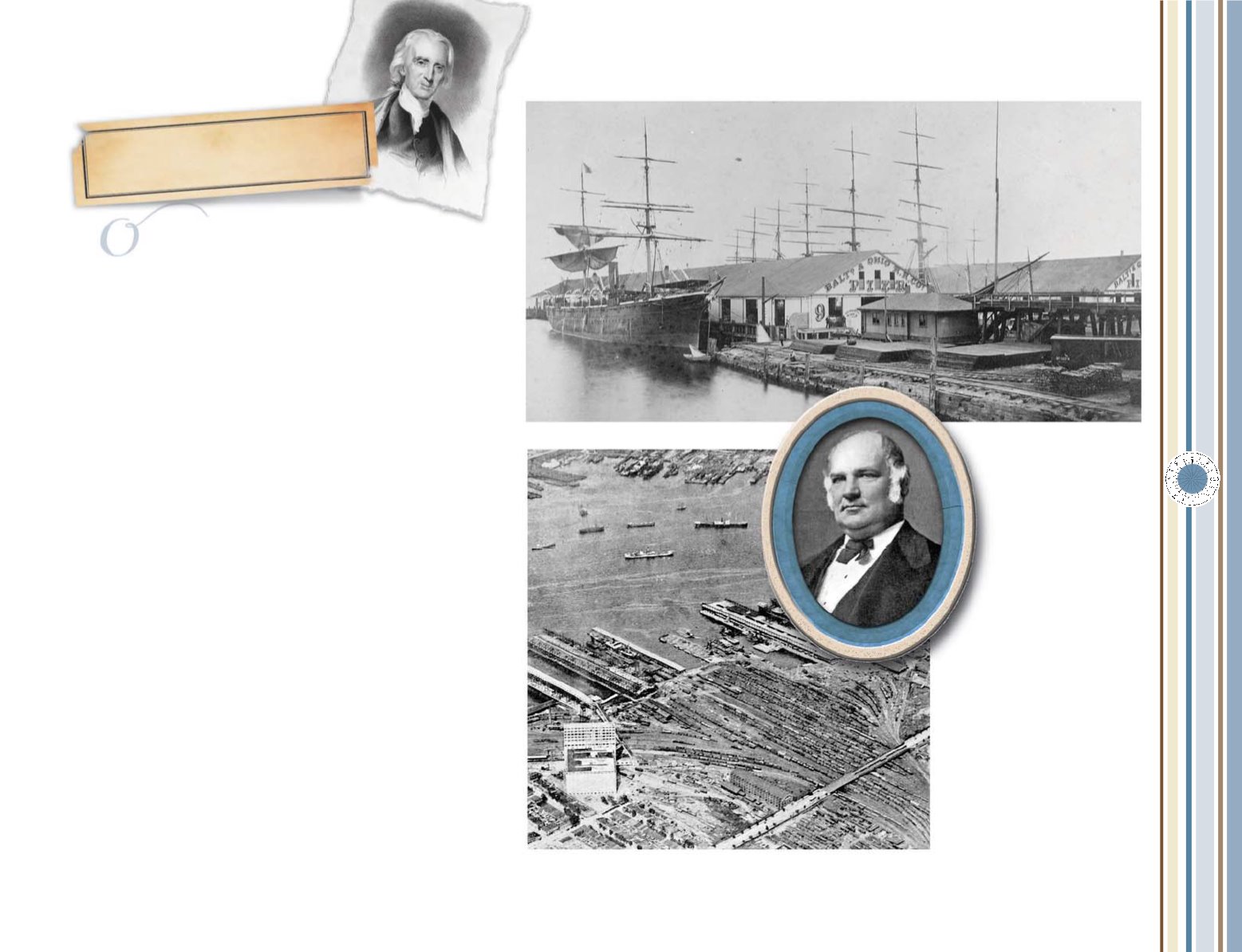
29
n July 4, 1828, Charles Carroll of Carrollton
turned the first spade of earth for the ceremonial laying of
the cornerstone at B&O’s Mt. Clare headquarters in West Baltimore.
The moment was rich in symbolism.
When Carroll died, he was the richest man in America and
the last surviving signer of the Declaration of Independence.
Carroll was a planter. John Work Garrett, who would become B&O
president, was an industrialist. The guard had changed.
Carroll’s fortune had funded Baltimore’s great Colonial houses
— Mt. Clare and Homewood House. Garrett would go a step better
and build Evergreen House, touching off another round of domicile
development among Baltimore’s upper crust.
Garrett, although nominally a railroad man, arguably exerted
a greater influence over the fortunes of the Port of Baltimore
than any other single individual. Until his death in 1884, he was
considered the most powerful person in the state.
Then, as now, Baltimore’s port and railroads form a true
symbiotic relationship — both benefit from the other’s presence
and good health.
Determined to fully leverage his most valuable asset, Garrett
opened up new markets for the Port by extending rail lines west-
ward, and built a marine terminal at Locust Point where cargoes
could be transferred directly between trains and ships without
intermediary handling — an innovation which the rest of the
industry would follow. Garrett later hedged his bet by buying a
fleet of steamships; his vessels were the only operating U.S.-flag
ships engaged in ocean trade after the Civil War.
Locust Point marks the spot where visitors to today’s Inner
Harbor see the 120-by-70-foot Domino Sugar sign, a landmark
claimed to be America’s second-largest neon construction east of
Facing page: The CSX
railyard at Locust Point.
Above: Two financiers
—Charles Carroll of
Carrollton, upper left,
and JohnWork Garrett,
left —were founders of
the B&O Railroad. Carroll
was reputedly America’s rich-
est man when he died and
Garrett was considered one of
Maryland’s most powerful men.
Garrett expanded the railroad
to link the Port to lucrative
Midwest markets and brought
railcars directly to the piers.
C
hanging of the
G
uard


